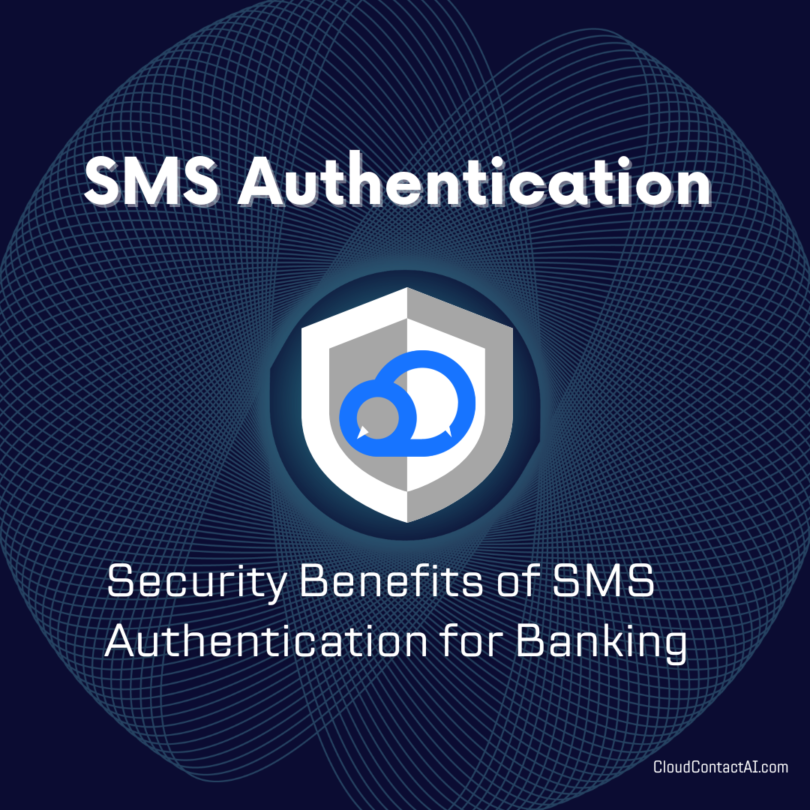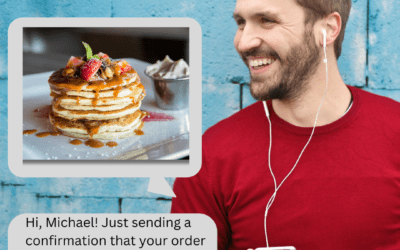Introduction
SMS messaging can greatly contribute to enhancing profitability for financial institutions in several ways. Firstly, by implementing a banking SMS gateway, institutions can provide their customers with reliable information about their financial transactions. This immediate and accurate notification of account transactions not only boosts customer satisfaction but also helps in reducing instances of fraud and theft by using one-time passwords.
Furthermore, SMS banking solutions enable financial institutions to generate real-time fraud alerts, allowing customers to take action and protect their accounts from unauthorized activities promptly. Additionally, financial institutions can utilize SMS messaging to send payment reminders, improving debt collection rates and reducing the likelihood of defaulting on loan payments.
SMS messaging enables customers to closely monitor their account activity, promoting a sense of control and security. This ability to stay informed and engaged with their finances ultimately leads to increased customer satisfaction and retention, as customers perceive the institution as reliable and caring. In addition to enhancing customer interactions, SMS messaging serves a crucial role in the authentication processes for a broader range of stakeholders, including contractors, vendors, and suppliers. SMS authentication offers incredible value as it operates on a pay-as-you-use basis. This ensures no unnecessary recurring costs, making it a cost-effective solution for all parties involved.
The timeliness of SMS authentication messages is another significant benefit. These messages are sent instantly, facilitating a swift verification process that is critical in today’s fast-paced business environments. This not only enhances the security for financial transactions but also ensures that contractors, vendors, and suppliers can operate with increased confidence in the authenticity of their interactions.
What is SMS Two Factor Authentication?
SMS two factor authentication (2FA) is a widely used method of digital authentication that enhances account security alongside the traditional password and login protection. It involves the delivery of a short one-time password via text message, which is then required to access the user’s account. One key advantage of SMS 2FA is that it doesn’t rely on internet access, making it a convenient option for users who may not have consistent online connectivity.
A one-time password (OTP) is a security mechanism used to authenticate users on a digital platform. Unlike regular passwords that remain the same until changed, an OTP is generated for each authentication attempt and expires after the session begins or after a short period. This makes it ineffective for potential misuse by attackers, as it cannot be used again to gain unauthorized access.
While SMS 2FA offers convenience and speed, it also prioritizes security. Although there are some concerns regarding potential interception, the likelihood of such incidents is relatively low. The generation and transmission of SMS notifications occur offline via the cell network, which reduces the chances of in-transit interception compared to other methods like email or web-based authentication. However, additional security measures, such as incorporating an extra knowledge factor, is worth considering to further safeguard against specific risks like SIM swapping or SMS interception.
SMS 2FA is the most popular solution for a multitude of reasons. First and foremost, it is highly regarded due to its ability to be easily implemented. With minimal effort and configuration, organizations can seamlessly enable SMS 2FA for their users, ensuring enhanced security without disrupting their existing workflows.
Affordability is another crucial factor contributing to the popularity of SMS 2FA. Compared to other authentication methods, SMS-based solutions are often more cost-effective, making them accessible to organizations of varying sizes and budgets. This affordability factor allows businesses to prioritize security without incurring significant financial burdens.
What is the advantage of SMS 2FA over other authentication methods?
An advantage of SMS 2FA over other authentication methods is that it does not require the user’s phone to have internet access. This gives SMS-based 2FA an edge over other methods that rely on online connectivity. Users can still complete the authentication process even without an internet connection, ensuring accessibility and convenience.
How does SMS 2FA provide an additional level of protection?
SMS 2FA provides additional protection by requiring a short one-time password to be sent to the user via text message. This one-time password is necessary to log in and access the user’s account. It adds an extra layer of security beyond the standard password and login protection.
What is a flash SMS and how does it enhance security?
A flash SMS is a type of SMS that shows up on the recipient’s screen for one-time viewing instead of being stored in the SMS inbox. It enhances security by not storing the security code on the recipient’s handset. This mitigates the risk of unauthorized access since the code is not stored and cannot be retrieved from the recipient’s device.
What happens after the user receives the authentication PIN code?
After receiving the authentication PIN code, the user types it into the application’s form to confirm their identity and gain access to their account and information. This step serves as a confirmation mechanism to ensure that the user is authorized to access their account.
How is the user’s identity confirmed during the SMS two-factor authentication process?
The user’s identity is confirmed by entering the authentication PIN code received via SMS into the application’s form. This step ensures that the user is in possession of their mobile phone and can receive the code, adding an extra layer of security to confirm their identity.
Benefits of SMS 2 Factor Authentication
How does SMS authentication help defend against phishing attacks?
SMS authentication serves as a defense against phishing attacks by providing a second factor of authentication. Even if a scammer obtains sensitive information, such as passwords or usernames, they will not be able to gain access to the victim’s account without the authentication PIN received via SMS. This alerts the customer to a potential phishing attack when they receive a 2FA text message without attempting to log in.
How does SMS authentication help mitigate the costs of delivering authentication codes?
SMS authentication ensures that users won’t retry immediately after receiving a notification, mitigating the costs of delivering authentication codes. Each retry could potentially add to the cost, but with quick and successful delivery, there is no need for immediate retries.
What specific security measures are taken to protect against interception and fraud?
SMS notifications are generated and sent offline via the cell network, which reduces the chances of interception during transit. Additionally, using a flash SMS can add an extra layer of security by not storing the security code on the recipient’s handset.
How easy is it to set up SMS authentication?
SMS authentication can be set up using the same SMS API used for customer communication, making the setup process simple and convenient. Users do not need to install any additional apps or extensions.
How fast is the delivery of SMS authentication codes?
SMS notifications can be received on handsets within seconds, ensuring quick delivery of authentication codes.
What are the benefits of using SMS 2FA and a third-party authenticator app together?
SMS, or Short Message Service, offers several advantages for banking purposes in terms of communication. Firstly, one significant advantage is the enhanced speed that SMS provides. Messages are delivered instantly, allowing users to quickly receive and respond to important banking information or notifications. This speed is particularly beneficial in urgent situations where immediate action may be required.
Secondly, SMS is known for its cost-effectiveness. Compared to other communication methods, such as email or traditional mail, sending text messages is often more affordable for both banks and customers. Additionally, SMS can offer a cost-saving alternative to voice-to-voice calling, as it eliminates the need for phone call charges.
Another advantage of SMS is its reliability. Text messages have a high delivery success rate, minimizing the risk of important banking information being lost or delayed. This reliability ensures that banking customers can have confidence in the timely receipt of notifications, transaction updates, or security alerts.
Moreover, SMS provides unobtrusive messaging, meaning that customers can conveniently receive banking updates without any disruption. Unlike phone calls that require immediate attention or emails that can easily get buried in an inbox, SMS messages are typically concise and can be easily read and responded to at the customer’s convenience.
Adding to the list of advantages, text messaging enjoys superior open and response rates compared to email communications. This higher engagement rate implies that customers are more likely to read and act upon SMS messages promptly. The preference for text messaging over email also signifies that SMS is regarded as a more user-friendly method of communication.
In essence, SMS offers several advantages for banking purposes. Its speed, cost-effectiveness, reliability, unobtrusive messaging, and high engagement rates make it an advantageous channel for banks to communicate with customers effectively and efficiently.
How can users be onboarded to an authenticator app?
Users can be onboarded to an authenticator app by following a few simple steps. First, they need to enable Two-Factor Authentication (2FA) for the desired service they want to use the authenticator app with. This can usually be done through the account settings of the service.
Once 2FA is enabled, the service will provide a QR code that needs to be scanned using the authenticator app on the user’s mobile phone. This QR code contains the necessary information to set up the service within the app.
For example, if a user wants to set up Google Authenticator for their Facebook login, they would enable 2FA in their Facebook settings. Facebook will then generate a QR code that can be scanned via the Google Authenticator app.
Scanning the QR code adds the service, in this case, Facebook, to the user’s authenticator app. This enables the app to generate a unique 6-digit code for each login attempt.
From that point on, whenever the user wants to log in to Facebook, they simply need to enter their password as usual and then open the authenticator app. The app will display the 6-digit code specifically for the Facebook account. The user then enters this code into the designated 2FA textbox on the Facebook login page.
Some authenticator apps offer an additional convenience feature in the form of push notifications. These apps can send a push notification to the user’s device whenever a login attempt occurs. This eliminates the need for the user to search for the account in the app manually. Push notifications tend to arrive quicker than text messages, providing a faster and more seamless user experience.
By following these steps, users can easily onboard themselves to an authenticator app and enjoy the added security provided by Two-Factor Authentication.
Enhanced Security
What are the advantages of using TOTP-based authentication?
TOTP-based authentication, offered by 2FA mobile apps, provides additional security compared to SMS-based authentication. The advantages include the use of time-based one-time passwords that expire after a specific time, the elimination of SMS vulnerabilities, and the reduced chance of interception due to the limited data transmission. These factors make the authentication process more secure and less prone to unauthorized access.
What vulnerabilities are avoided by using a 2FA app instead of SMS?
Using a 2FA app instead of SMS avoids vulnerabilities associated with the SS7 network. SMS-based authentication relies on the SS7 network, subject to vulnerabilities and attacks. 2FA apps, on the other hand, generate TOTPs independently and transmit limited data, making them more secure and immune to SS7 vulnerabilities.
How does the independent generation of TOTPs enhance security?
The independent generation of TOTPs enhances security by reducing data transmission. Since the TOTPs are calculated separately by the authenticator app and the service is accessed, the amount of data transmitted is limited. This lowers the chances of anyone intercepting the code and adds an extra layer of security to the authentication process.
How are TOTPs generated and transmitted?
TOTPs are calculated independently by the authenticator app and the accessed service. The authenticator app and the service use the same algorithm to generate the TOTPs, ensuring synchronization. Only the user-entered TOTP is transmitted to the online service’s API for verification.
How do 2FA mobile apps like Google Authenticator differ from SMS-based authentication?
While SMS authentication relies on SMS PIN codes, 2FA mobile apps use six-digit one-time passwords (TOTP) that expire after a specific time. This design is inherently more secure and less vulnerable to certain attack types, including those exploiting the SS7 signaling protocol vulnerabilities prevalent in cellular networks.
These time-based one-time passwords are independently calculated by both the authenticator app and the accessed service. As a result, they are not susceptible to the SS7 vulnerabilities that have raised concerns regarding SMS security. Only the user-entered TOTP is transmitted to the application programming interface (API) by the online service, verifying whether the correct TOTP was entered before granting access.
By generating the TOTPs independently, there is minimal transmission of data. Consequently, the chances of interception and unauthorized access to the authentication code are significantly reduced. This inherent design ensures a higher level of security by limiting data delivery.
In comparison, the SMS authentication process involves the user entering a mobile phone number into the application’s form, receiving an authentication PIN code via an SMS message, and typing it into the application’s form to confirm their identity and gain access to their account and info.
Mitigating Fraudulent Activities:
Protecting your customers is crucial for any business. When it comes to banking and other financial institutions, protection becomes one of the most important priorites. SMS authentication helps banks mitigate some of the worst types of fraudulent activities.
Phising attacks are one of the most common types of attacks that banks face today. Phishing involves tricking customers into revealing their sensitive information, such as passwords, user names, social security numbers etc. through either emails or other online communication. SMS 2 factor authentication helps to defend from these phishing attacks. With SMS 2FA, even if a scammer manages to obtain the sensitive information above, they will not be able to gain access to the victim’s account. When a customer receives a 2FA text message, but did not attempt to log in, this is instantly a red flag notifying the customer that they may be a target of a phishing attack.
SMS authentication offers a multitude of benefits for banks and their customers, providing an additional layer of security to the traditional username and password authentication. By implementing SMS authentication, banks can ensure that only authorized users are able to access their accounts, effectively combating the risk of sensitive information and accounts being compromised. This two-factor authentication strategy serves as a powerful defense against fraudulent activities, particularly phishing attacks which are prevalent in the banking industry. With SMS two-factor authentication, even if a scammer manages to obtain a customer’s sensitive information, they will be unable to gain access to the victim’s account. This robust security measure helps protect customers’ accounts and personal information, safeguarding them from potential harm. Furthermore, SMS authentication is a cost-effective alternative compared to other authentication methods such as hardware tokens or biometric authentication, making it an attractive option for banks
Cost-Effective:
SMS authentication is a cost-effective way to implement two-factor authentication. Compared to other authentication methods such as hardware tokens or biometric authentication, SMS authentication is a much cheaper alternative. With the low cost of SMS marketing services, SMS authentication is a quality investment for banks to protect their customers and their accounts, while maintaining compliance.
Ensuring immediate delivery of SMS tokens for Two Factor Authentication (2FA) is crucial for businesses aiming to provide a seamless user experience. By leveraging reliable SMS marketing services that prioritize both speed and delivery rates, businesses can enhance the security of their authentication process. Optimizing the SMS delivery process by utilizing advanced technologies and implementing robust monitoring systems can help businesses identify and address any potential issues that may impede immediate delivery. This proactive approach not only enhances the user experience but also ensures a smooth and secure authentication process for customers.

Improved Customer Experience:
There are several strategies that banks and financial institutions can employ to streamline banking messaging using SMS. One effective method is to utilize SMS for two-factor authentication, where a one-time password is sent via text message to verify the identity of the account holder. This adds an extra layer of security while simplifying the authentication process for the customer.
Additionally, SMS can be used to send real-time alerts to account owners regarding any suspicious or fraudulent activity on their accounts. By promptly notifying customers through SMS, banks can expedite the process of stopping fraudulent transactions and minimize potential damages, thus enhancing customer satisfaction and loyalty.
This improvement in experience for user’s can lead to a better relationship with bank customers, leading to more revenue generation for the banks who provide SMS 2 factor authentication.
Compliance Requirements:
Many regulatory bodies such as the Payment Card Industry Data Security Standard (PCI DSS) require banks to implement two-factor authentication to comply with security standards.
SMS authentication is a commonly used and an acceptable form of two-factor authentication under these regulations. Implementing SMS authentication can help banks comply with these regulations and avoid potential fines or penalties.
Businesses can significantly enhance compliance with data security regulations by implementing a combination of SMS 2FA and a third-party authenticator app. While SMS 2FA is an effective method for adding an additional layer of security and authentication to user logins, supplementing it with a third-party authenticator app brings added benefits.
By integrating a third-party authenticator app alongside SMS 2FA, businesses can provide users with an even more robust and secure authentication process. This approach involves requiring users to not only enter their SMS PIN code but also verify their identity through the third-party app. This additional step adds complexity to the authentication process, making it harder for unauthorized individuals to gain access to sensitive data or systems.
Moreover, implementing a third-party authenticator app enhances user experience by providing a more streamlined and convenient authentication process. Users can access the app directly, without relying on potentially undelivered or delayed SMS messages. This approach eliminates the frustrations associated with SMS-based authentication, resulting in higher user satisfaction and overall compliance.
The Bottom Line
Businesses can integrate two-factor authentication (2FA) into their apps by engaging with integration specialists who can provide guidance on setting up and activating 2FA within their software, website, or application. These specialists offer expertise on the various methods available for implementing and triggering 2FA to enhance security for users accessing their platforms. Whether it is the first time integrating 2FA or seeking to enhance existing security measures, businesses can rely on these specialists to navigate the process effectively and seamlessly.
Integrating SMS with existing CRM systems allows banks to automate customer texts, thereby enhancing communication efficiency and enabling the focus on higher-value services. By adopting omnichannel messaging strategies through SMS, banks can ensure that customers receive a consistent experience across all communication platforms, greatly enhancing overall satisfaction and loyalty.
SMS authentication effectively provides several security benefits for banks of all sizes. It enhances security by providing a second layer of protection in the form of authentication, improves customer experience, is cost-effective, assists banks in complying with regulations, and mitigates fraudulent activities. The secure nature of SMS-based 2FA lies in its operational mechanics. The SMS notification is generated and sent offline via the cell network, not email or the web. While there are concerns about other security risks, these are often less significant than portrayed.
If you are ready to begin implementing SMS authentication, click the link below and sign up today!
Not sure if you’re ready to revolutionize the way your business communicates? Sign up for our 14-day free trial!
What do you have to lose?




